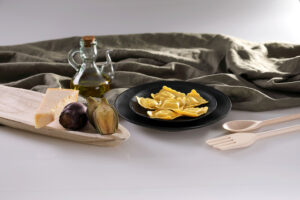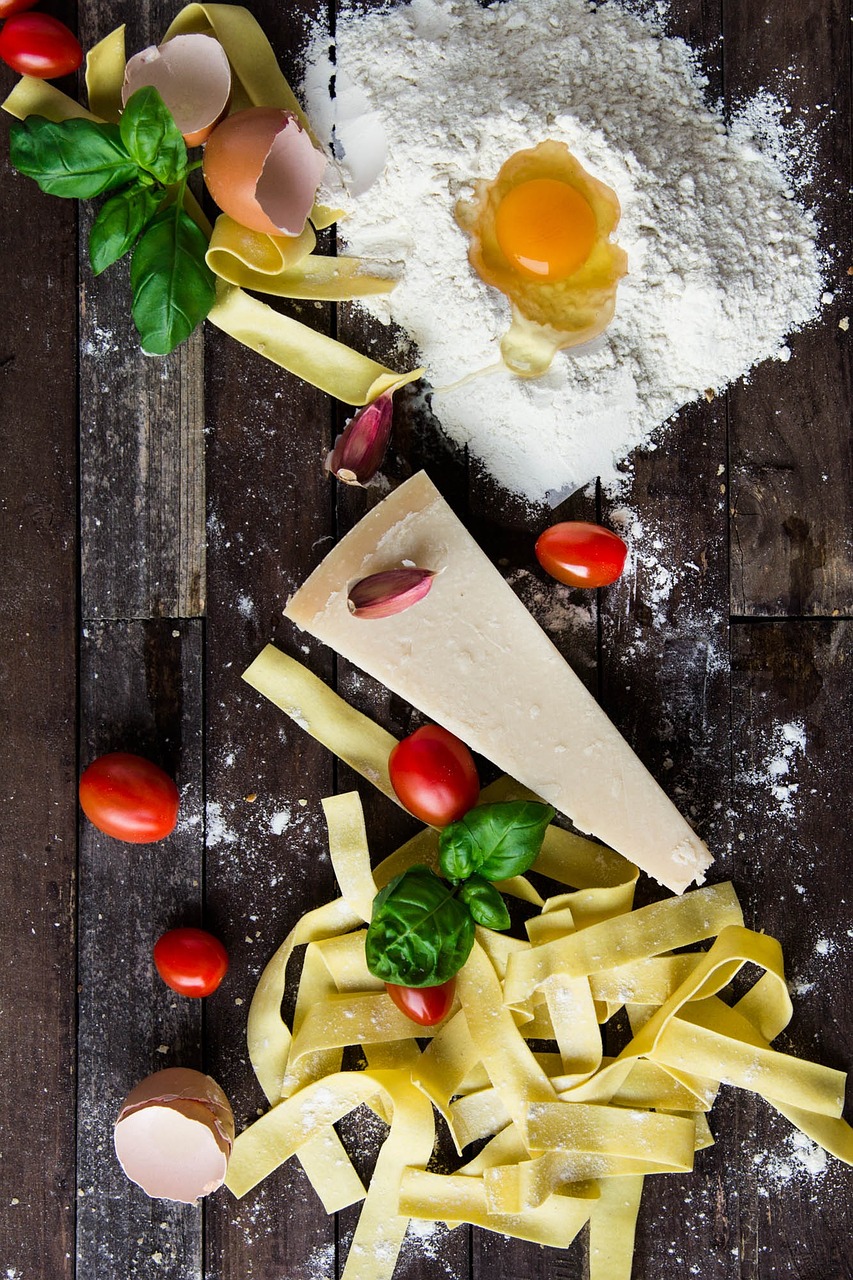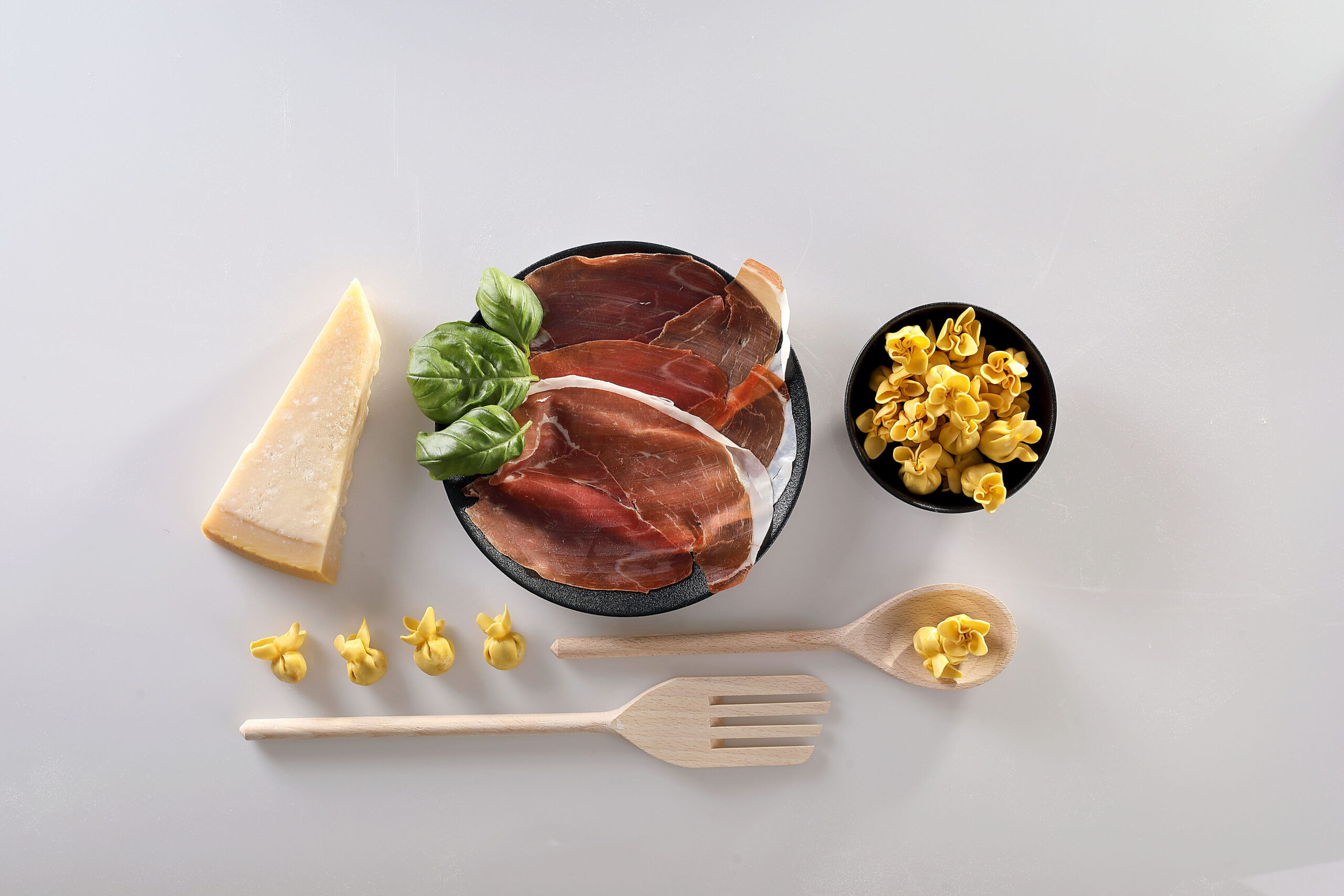Fresh pasta was created and popularised in Italy, where it became an essential element of traditional cuisine. It is distinguished by its quick cooking and versatility, allowing the creation of dishes such as ravioli, tagliatelle and lasagna, among others. Besides being a delicious product, it is a good source of carbohydrates, proteins, vitamins and minerals.
What is fresh pasta?
Fresh pasta is a variety of pasta made from wheat flour, eggs and water. Unlike dry pasta, which is dehydrated for preservation, fresh pasta is consumed shortly after it is made and is characterised by its tender texture and distinctive taste.

What is the difference between fresh pasta and regular pasta?
Fresh pasta and dry pasta differ in several aspects, from the ingredients and the production process to their texture, taste and culinary uses.
Ingredients
Fresh pasta is made from wheat flour, eggs and water. Dry pasta is generally made from durum wheat semolina and water. It does not usually contain eggs, although there are variants that do.
Preparation
Fresh pasta dough is kneaded and rolled out, then cut into the desired shapes and cooked or eaten quickly. It does not dry out completely, so it must be kept refrigerated and has a short shelf life. On the other hand, dry pasta dough is kneaded, extruded or cut and then completely dried. This allows it to have a very long shelf life without the need for refrigeration.

Texture and taste
Fresh pasta has a softer and more tender texture due to the presence of eggs and the lack of complete drying. It tends to have a richer and often more complex flavour, due to the fresh and additional ingredients.
Dry pasta, on the other hand, has a firmer and more consistent texture after cooking. This is due to the high gluten content in durum wheat semolina and the drying process. The taste is more neutral and often depends on the sauce or accompaniment.
Cooking time
Fresh pasta generally cooks much faster than dry pasta, often within 2-4 minutes, depending on the thickness and shape. However, dry pasta requires a longer cooking time, between 8-12 minutes, depending on the type and thickness of the pasta.

Classification of fresh pasta
Fresh pasta can be classified according to their shape and size into three main categories.
- Long pasta. These are long strips of pasta in various widths. For example, Fettuccine, Tagliatelle, Pappardelle or Spaghetti.
- Short pasta. These are smaller pieces of pasta in various shapes. Examples: Farfalle, Orecchiette, Cavatelli or Trofie.
- Tiny pasta. These are very small pastas, often used in soups. Examples are Orzo, Stelline or Acini di pepe.
Nutritional benefits
Fresh pasta provides different nutritional benefits to the human body such as:
Source of fibre. Especially those made with wholemeal flour are rich in fibre. This helps to regulate intestinal transit, prevent constipation, satiate appetite and control cholesterol levels.

Energy intake. It is an excellent source of complex carbohydrates, which provide energy in a gradual and sustained way. This is ideal for people who are physically active or who need a constant energy supply throughout the day.
Essential nutrients. It provides proteins necessary for the growth, maintenance and repair of tissues. As well as B vitamins, essential for energy metabolism and the functioning of the nervous system. And minerals, such as potassium, phosphorus and magnesium, important for various bodily functions.
Gastronomic uses of fresh pasta
Fresh pasta is a versatile cooking staple, prized for its smooth texture and its ability to absorb and complement flavours in the kitchen. As such, it is used in a wide range of culinary preparations, such as:
- Simple pasta dishes. With tomato-based sauces, cream, pesto, among others.
- Stuffed pasta. Such as ravioli or tortellini, served with light sauces so as not to overshadow the filling.
- Soups. This dish can be made with tiny pasta, as they provide texture and consistency.
- Pasta salads. The use of short pasta, together with vegetables, vegetables, cheese and dressings make a dish rich in flavour and texture.
- Baked pasta. Such as lasagne, which combines layers of pasta with sauces, meat and cheese.
- Create side dishes. Fresh pasta can be sautéed with vegetables, meat or seafood and served as a side dish to a main course.
- Fresh pasta tartlets. Pasta is used as a base to create mini or individual tartlets, filling them with a variety of ingredients such as ricotta, spinach, sundried tomatoes, pesto, hummus, etc.
- Fresh pasta canapés. This dish can be made with fresh pasta in small shapes, baked or fried until crispy. This dish can be topped with a variety of toppings such as cream cheese, smoked salmon, avocado, etc.
- Quiches. This dish is made with pastry filled with a mixture of eggs, milk, cream, cheese and other ingredients.
- Sweet gnocchi. Pasta is used to make sweet gnocchi cooked with butter, sugar and cinnamon, or with a fruit or chocolate sauce.
Premium fresh pasta
VOLTAN has been making the best fresh Italian pasta on the market for over 80 years. Of Venetian origin, this authentic pasta has a wide catalogue of delicious products.
From Codina Foods we distribute VOLTAN’s star brand “Emma Giordani”, high quality pasta that will make you enjoy the real Italian cuisine to the maximum.


